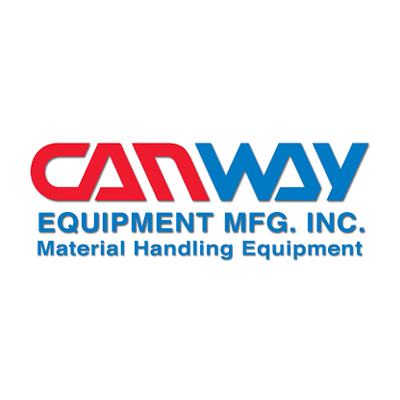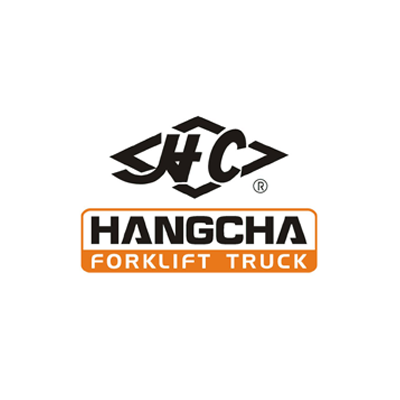|
A pallet jack plays a vital role in keeping warehouses and businesses functioning. Whether you're a seasoned pro or just starting out, this guide will equip you with all the knowledge you need to navigate the world of pallet jacks.
We'll delve into their purpose, the proper terminology, the power options (electric vs. manual), explore the various types available, and answer burning questions about weight capacity and ideal applications. Click on each section to learn more:
Looking for assistance selecting the perfect pallet jack for your needs? Contact us today. Your Guide to Selecting the Perfect Pallet Jack1. What Is the Purpose of a Pallet Jack?
Pallet Jacks help you transport goods across short distances.
A pallet jack, also known as a pallet truck, is an essential tool for material handling. Designed to optimize productivity and minimize labor, a pallet jack serves the primary purpose of transporting pallets of goods across a short distance within a warehouse or retail facility.
Its basic design includes the following:
The pallet jack is the unsung hero of shipping and receiving areas. It allows you to move heavy and bulky items with ease, reducing the risk of injury and the time it takes to move products from one point to another. In essence, the pallet jack is a key player in improving operational efficiency. It is particularly useful in tight spaces where larger equipment, like forklifts, can’t maneuver. Whether it’s moving deliveries to storage areas or transporting goods to the shipping dock, the pallet jack is a versatile and indispensable piece of equipment in the logistics chain. Its purpose extends beyond mere transportation; it is a facilitator of smooth workflow and a contributor to enhanced safety in your workplace. 2. What Is the Proper Name for a Pallet Jack?
Pallet jacks are known by several different names.
The proper name for a pallet jack is pallet jack, but it is known by several other names as well. It’s commonly referred to as a pallet truck, and in some regions, it might be called a pallet pump or pump truck. Other names include:
These various names reflect the tool’s versatility and widespread use in different industries and regions. Each term, while different, refers to the same essential equipment used for lifting and moving pallets within a warehouse or similar setting. 3. Electric vs. Manual Pallet Jacks
There are advantages and disadvantages to both electric and manual pallet trucks.
When it comes to pallet jacks, both electric and manual options offer distinct advantages depending on your specific needs. Here's a breakdown to help you decide which one would be the best choice in your warehouse:
Manual Pallet Jacks:
Pros:
Manual pallet jacks are very cost-effective and require minimal maintenance. They have a compact size wich makes them ideal for maneuvering in tight spaces. Manual jacks are always "ready to go" so there is no need to worry about charging batteries. Cons: Manual pallet jacks require physical effort from the operator to lift, lower, and propel the jack. They are less efficient for long distances or heavy loads. They can also lead to operator fatigue over extended periods. Electric Pallet Jacks:
Electric pallet jacks require less effort to operate.
Pros:
Electric pallet jacks offer you effortless operation thanks to their electric motors for lifting, lowering, and propulsion. They are ideal for the following:
Many models offer features like automatic braking and steering for enhanced safety and efficiency. Cons: Electric pallet jacks have a higher upfront cost compared to manual jacks. They require regular battery charging and maintenance and can be bulkier. Some electric models may also have a slightly larger turning radius than manual models. However, lithium-ion electric models offer opportunity charging and very little maintenace. The Takeaway: Electric pallet jacks are the clear winner for high-volume operations, long distances, and heavy lifting. However, if you have a smaller space, prioritize maneuverability, or have a tight budget, manual jacks remain a valuable option. 4. What Are the Different Types of Pallet Jacks?
Low Profile Pallet Jacks:
Low profile pallet jacks can slide under pallets with very low clearance and are used for moving heavy machinery, furniture, appliances, etc. All-Terrain Pallet Jacks: With larger wheels and a robust design, all-terrain pallet jacks are suitable for outdoor use or on uneven surfaces, like in nurseries or construction sites.
Weighing Scale Pallet Jacks:
Weighing scale pallet jacks come with a built-in scale to weigh loads on the go, which is beneficial for businesses that need to track cargo weights, like shipping companies. Adjustable Pallet Jacks: Adjustable pallet jacks have forks that can be adjusted to accommodate different sizes of pallets, offering versatility for various pallet dimensions.
Semi-Electric Pallet Jacks:
These are a hybrid between manual and electric pallet jacks, where lifting is powered by electricity, but movement is manual. Each type of pallet jack is designed to meet specific needs within the material handling industry, enhancing efficiency and safety in different work environments. 5. What Types of Applications Use Pallet Jacks?
Pallet jacks are used in a wide variety of applications and scenarios.
Pallet jacks are the workhorses of warehouses, distribution centers, and countless other industries that rely on efficient movement of palletized goods. Here's a look at some of the most common applications for these versatile tools:
Warehousing and Distribution: Warehousing and distribution centres are the bread and butter of pallet jacks! They are widely used for loading, unloading, and transporting palletized goods throughout warehouses and distribution centers. Retail Stores: Pallet jacks help stock shelves, move merchandise displays, and replenish inventory in backrooms in many retail settings. Manufacturing: Pallet jacks keep production lines humming by transporting raw materials, finished goods, and work-in-progress components. Shipping and Receiving: Pallet jacks are crucial for loading and unloading trucks and containers, ensuring a smooth flow of goods in and out. Food and Beverage: Pallet jacks play a vital role in food processing facilities, grocery stores, and restaurants, moving ingredients, packaged goods, and beverages. Construction Sites: Electric pallet jacks can move heavy building materials like stacks of hardwood flooring or large equipment around construction sites. Nurseries and Outdoor Applications: All-terrain pallet jacks are designed to handle rough surfaces, making them suitable for moving landscaping materials or other outdoor uses. Home and DIY Projects: For individuals who engage in heavy lifting for home projects, manual pallet jacks can be a practical tool for moving large items like furniture or appliances Beyond these common applications, pallet jacks find use in a wide range of industries, from automotive parts to pharmaceuticals, thanks to their versatility and ease of operation. 6. How Much Weight Can a Pallet Jack Lift?
There is a wide range of maximum capacities for different pallet jacks.
The weight capacity of a pallet jack isn't a one-size-fits-all answer. It depends on the specific type of jack you're using. Here's a breakdown:
Standard Pallet Jack: Standard pallet jacks typically handle loads between 2,500 and 5,500 pounds (1,134 and 2,495 kilos). Heavy-Duty Pallet Jack: Built for tougher jobs, heavy-duty pallet jacks can lift up to 8,000 pounds (3,629 kilos) or even more. Low-Profile and Straddle Stacker Pallet Jacks: These jacks often have a slightly lower weight capacity than standard models, typically ranging from 2,200 to 4,000 pounds (998 to 1,814 kilos) . Important Factors to Consider: Always refer to the manufacturer's specifications for the specific weight capacity of your pallet jack. Exceeding the weight limit can damage the jack and pose safety hazards. Electric vs. Manual: Electric pallet jacks generally have a higher weight capacity due to their motor assistance. Remember: It's always better to err on the side of caution. If you're unsure about the weight of your load, choose a jack with a higher capacity than you think you'll need. 7. New vs. Used Pallet Jacks
There are pros and cons to buying both new and used pallet jacks.
Now that you've explored the world of pallet jacks, a crucial question remains: should you buy a new or used one? Both options have their merits, and the best choice depends on your specific circumstances. Here's a breakdown to help you decide:
New Pallet Jacks: Pros: Brand new condition means optimal performance, reliability, and minimal risk of immediate repairs. New pallet jacks often come with warranties for added peace of mind. You will also have a wider selection of features and functionalities to choose from when you buy new. Cons: A new pallet jack is going to cost more than a used model. You may also have to wait to take delivery if there isn't one readily available in stock. Used Pallet Jacks: Pros: Used pallet jacks have a significantly lower price tag, making them a budget-friendly option. They are a great choice for occasional use or low-weight applications. Cons: When buying used, you will have a higher potential for hidden issues or wear and tear that may require repairs in the future. You will probably also have a limited selection of features and functionalities to choose from compared to new models. Buying used also requires more inspection and due diligence before purchase. It is a good idea to purchase used equipment from a reputable dealer you can trust and who stands behind their equipment. Here are some additional factors to consider: Frequency of Use: If you need a pallet jack for daily heavy-duty use, a new model might be a better long-term investment. For occasional use, a used option could be sufficient. Budget: New pallet jacks come at a premium. If budget is a major concern, a used jack might be the way to go. Inspection: For used models, a thorough inspection by yourself or a qualified mechanic is crucial to identify any potential problems. The Takeaway: New pallet jacks offer peace of mind and optimal performance, while used models provide a budget-friendly option. Weigh your needs, frequency of use, and budget to make the best choice for your specific situation. Trust Island Handling for All Your Material Handling Needs
Established in 1987, Island Handling Systems Inc. is your one-stop shop for all your material handling needs in Charlottetown, Prince Edward Island. We are a family owned business with over 44 years of combined expertise in the material handling industry,
Island Handling offers you a comprehensive selection of:
Our convenient location at 100 East Royalty Road offers you a showroom and parts department, while our second building onsite is a fully equipped service department and bulk storage to ensure they have what you need, when you need it. Contact us today to get started. Comments are closed.
|
ArchivesCategories |














 RSS Feed
RSS Feed







